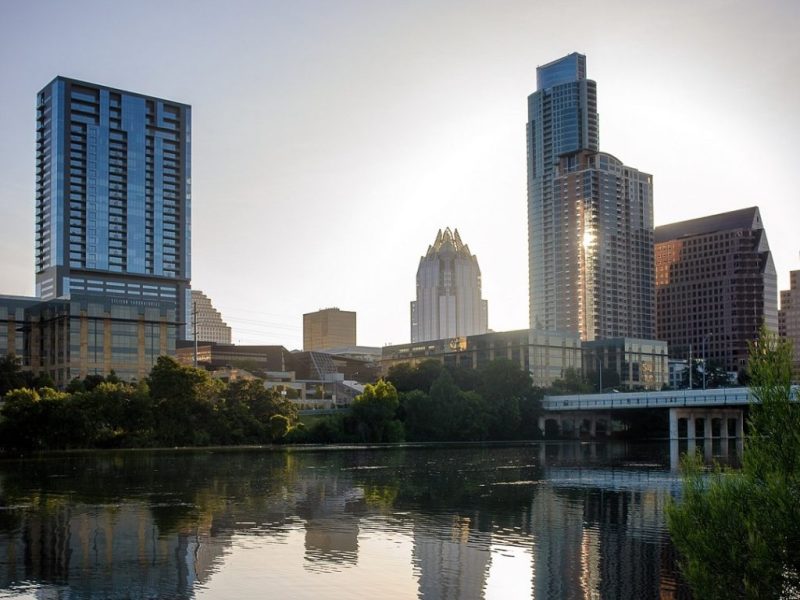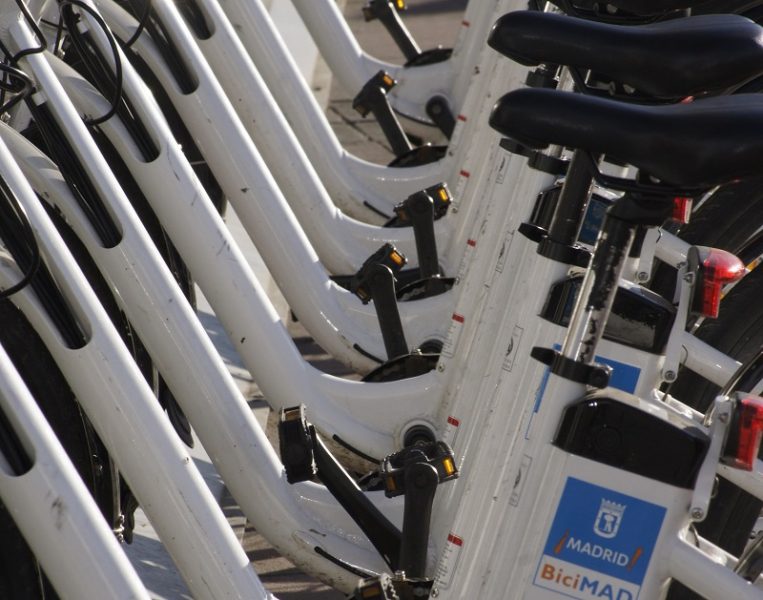2 October 2020
for Madrid Nuevo Norte


Austin, Texas.
The term “circular economy” has become widely used in recent years, often associated with the recycling of materials and products. While both concepts are closely related, the circular economy goes beyond the re-use of waste. Its goal is far more ambitious. It seeks to redefine the growth model; paying more attention to the benefits it can bring to the whole society.
This effort to prevent the depletion of natural resources goes hand in hand with the commitment to renewable sources and the fight against climate change. According to the Ellen McArthur Foundation, a British charity with the stated aim of promoting the transition towards a circular economy, this model is based on three principles: design out waste and pollution, keep materials and products in use, and regenerate natural systems. Cities will have a significant say on those three key points.
According to UN-Habitat, cities consume 78% of the world’s energy and produce over 60% of global greenhouse gas emissions. However, they represent less than 2% of the earth’s surface. This small portion of the planet is, at the same time, its leading economic and cultural generator and home to more than 50% of the world’s population. Therefore, urban environments are an adequate framework for implementing more sustainable development models.
Big cities such as London, New York or San Francisco have already implemented relevant initiatives aimed at reducing waste. Meanwhile, Milan has been developing an ambitious plan to limit food waste within its metropolitan area since 2015. These are just a few examples in the international arena. Initiatives in this regard range from large-scale municipal policies to specific projects that address particular problems. Austin, Texas, a city firmly committed to the circular economy, is a case in point.
One of the initiatives put in place by the Texan capital is the “Austin Materials Marketplace”, an online platform that connects businesses, factories and organisations to facilitate the upcycling of surplus resources from other companies. One company’s production waste is a valuable raw material for another. This translates into not only material saving but also the creation of jobs and new business opportunities.
Aside from giving new life to recycled materials, the sharing of products and services to use fewer resources is another fundamental principle of the circular economy, thus saving costs, while minimising its impact and optimising its useful life. Many cities have put into place transport sharing schemes, as in the case of Madrid’s BiciMad public bicycle-sharing system. However, the list is as endless as the possibilities.

To take one example, the English app Fat Llama allows users to share all kinds of tools and equipment at a low cost, including drills, cameras, and even drones. This scheme maximises the usefulness of objects that often remain in our storage rooms for decades to be used only on rare occasions, and benefits dozens of people.
The Canadian city of Toronto, which is rolling out a system to transform solid urban waste into biogas, was the venue of the World Circular Economy Forum in 2020. This metropolis is also home to another exciting initiative, namely, the Repair Cafés, where a team of volunteers help other people repair their damaged devices to give them a new life.
The “Cradle to Cradle“ concept is a more ambitious approach to devising, designing and producing any product. This approach takes into account all phases of the materials used in the design (extraction, processing, use, re-use, recycling, etc.). This means that all waste produced can be re-used, and all the components of a product can be 100% recycled or upcycled, feeding other biological and technical cycles.

Although consolidated cities are the more visible arena for the circular economy, urban design is also a unique opportunity to plan our environment for meaningful changes. Urban planning can thus help to resolve environmental, economic and social imbalances, at its very origin.
This is one of Madrid Nuevo Norte’s goals; a project that aims to act as a catalyst for the sustainable growth of Madrid and its region. It seeks to be a blank canvas upon which a new urban space can be created where many people will live and work, facilitating their transition to an environmentally responsible model.
This goal takes into account aspects as important as resource efficiency in the new areas to be built. In this regard, the focus is on energy de-carbonisation through electrification and renewable energy production, as well as on water management, including measures to harvest and re-use rainwater.
The commitment to circular economy begins at the urbanisation and construction phase of the project; hence, a comprehensive approach will be adopted for the closed-loop material cycle construction, incorporating circular economy principles to ensure a low carbon footprint.
Priority shall be given, either partially or wholly, to recovered or recycled building materials, and to locally extracted or manufactured materials. The project considers developing initiatives that promote the use of materials extracted and produced regionally within a 160-km radius or, where this is not possible, nationally. This would not only boost the local economy but also reduce significantly the impact caused by transportation to the worksite.
This would be complemented by a comprehensive waste management plan, including separate collection measures to ensure adequate collection and classification for subsequent upcycling.
Furthermore, during the development phase, the works shall take account of LEED and BREEAM standards, the two most prestigious international certifications for efficient resource management and re-use and recycling of materials